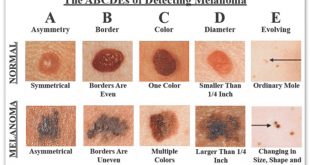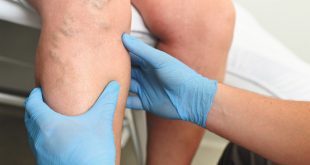By Ravi Chandra, MD, FRCS – The Vein Center of North Florida
 Varicose veins are veins that have become enlarged and twisted. They usually occur in the legs and can be painful and unsightly. The veins in our legs have one-way valves that help to keep blood flowing toward the heart. When these valves become weak or damaged, blood can flow backward and pool in the veins, causing them to stretch and bulge.
Varicose veins are veins that have become enlarged and twisted. They usually occur in the legs and can be painful and unsightly. The veins in our legs have one-way valves that help to keep blood flowing toward the heart. When these valves become weak or damaged, blood can flow backward and pool in the veins, causing them to stretch and bulge.
Spider veins are smaller, thinner veins that are often red or blue in color. They can appear in a web-like pattern on the legs, face, or other parts of the body. Like varicose veins, spider veins occur when the valves in the veins become weak or damaged, allowing blood to pool and the veins to stretch.
Factors that can increase the risk of developing Varicose Veins and Spider Veins include:
• Age: As we age, the valves in our veins may weaken, increasing the risk of varicose veins.
• Gender: Women are more likely to develop varicose veins than men, possibly due to hormonal changes.
• Pregnancy: Pregnant women are at increased risk of varicose veins due to increased blood volume and pressure on the veins.
• Family history: Varicose veins tend to run in families.
• Obesity: Excess weight can pressure the veins, increasing the risk of varicose veins.
Prevention tips for varicose and spider veins include:
• Maintaining a healthy weight
• Getting regular exercise
• Elevating the legs when sitting or lying down
• Avoiding sitting or standing for long periods of time
• Wearing compression stockings
• Eating a high-fiber, low-salt diet
If you have varicose or spider veins, several treatment options are available. Phlebectomy is a surgical procedure that involves removing the affected vein through small incisions in the skin. Sclerotherapy is a minimally invasive procedure that involves injecting a solution into the affected vein, causing it to collapse and fade over time.
Phlebectomy is a surgical procedure typically performed on varicose veins that are larger in size.
The procedure involves making small incisions in the skin and removing the affected vein through these incisions. It is typically performed on an outpatient basis under local anesthesia. The general steps involved in a phlebectomy procedure are:
1. Preparation: The patient is positioned on the operating table and the area to be treated is cleaned and sterilized.
2. Anesthesia: Local anesthesia is administered to numb the area around the affected vein.
3. Incisions: The surgeon makes a series of small incisions in the skin around the affected vein. These incisions are typically less than 1/4 inch in length.
4. Removal: The surgeon uses a small hook or needle to gently remove the affected vein through the incisions. Depending on the size and location of the vein, it may be removed in one piece or in smaller segments.
5. Closure: Once the affected vein has been removed, the incisions are closed with sutures or sterile strips.
6. Recovery: The patient can typically go home the same day as the procedure. Recovery time varies depending on the size and location of the treated veins, but patients are usually advised to avoid strenuous activity for a few days and to wear compression stockings to aid in healing.
Phlebectomy is an effective treatment for varicose veins that are larger in size. It is typically associated with minimal scarring and a relatively quick recovery time. However, it is important to note that the procedure may not be appropriate for everyone. Your doctor will determine if it is the best treatment option for you based on your individual needs and medical history.
Sclerotherapy is a non-surgical procedure for treating spider and small varicose veins. The procedure involves injecting a sclerosant solution into the affected vein, causing it to collapse and fade over time. It is typically performed in an outpatient setting and does not require anesthesia. Here are the general steps involved in a sclerotherapy procedure:
1. Preparation: The patient is positioned on the operating table, and the area to be treated is cleaned and sterilized.
2. Injection: The doctor uses a fine needle to inject the sclerosant solution into the affected vein. The solution irritates the vein’s lining, causing it to collapse and stick together.
3. Compression: After the injection, the doctor applies compression to the treated area to help prevent blood from flowing back into the collapsed vein. This is typically done using a compression bandage or stocking.
4. Multiple injections: Depending on the size and number of veins being treated, multiple injections may be needed to achieve the desired results.
5. Recovery: The patient can typically go home the same day as the procedure. Recovery time varies depending on the size and location of the treated veins, but patients are usually advised to avoid strenuous activity for a few days and to wear compression stockings to aid in healing.
Sclerotherapy is a safe and effective treatment for spider and small varicose veins. It is minimally invasive, and most patients experience minimal discomfort during the procedure. However, it is important to note that sclerotherapy may not be appropriate for everyone. Your doctor will determine if it is the best treatment option for you based on your individual needs and medical history.
The Leaders in Comprehensive Vein Care
Ravi Chandra, MD, FRCS
Ocala’s leading vascular surgeon, Dr. Ravi Chandra, is the only local surgeon certified by the American Board of Surgery, the American Board of Phlebology, and the American Board of Vascular Medicine as a diplomat in Endo-Vascular medicine. Dr. Ravi Chandra leads a team of medical professionals who take a personalized approach with each patient. The Vein Center of North Florida’s staff takes their time to listen to patient concerns and develop a customized treatment plan to address each patient’s medical concerns. Our goal is to perform the safest and least invasive procedure possible and get you back to living life at its fullest!
Patricia D. Hurst, ARNP-BC
In addition to our physician, physician assistants and nurse practitioners, we also have two full-time RVTs (certified vascular techs) to serve you. The Vein Center of North Florida is International Accreditation Commission (IAC) accredited for vascular testing. The IAC develops standards for evaluating quality of care and provides peer review processes. Maintaining IAC accreditation is our way of pursuing the highest level of excellence in patient care.
The Vein Center of North Florida
1920 SW 20th Pl Suite #201
Ocala, FL 34471
 Central Florida Health and Wellness Magazine Health and Wellness Articles of the Villages
Central Florida Health and Wellness Magazine Health and Wellness Articles of the Villages



